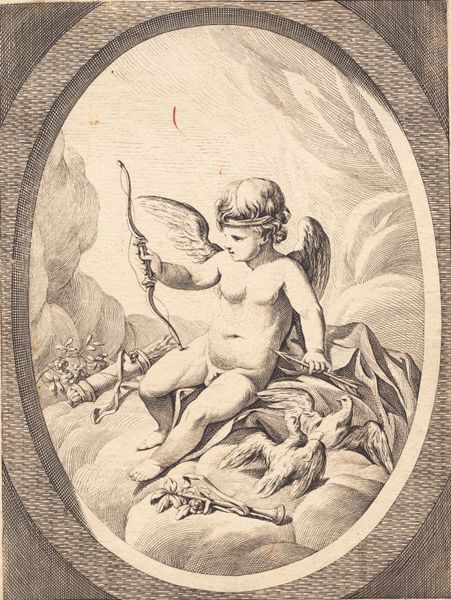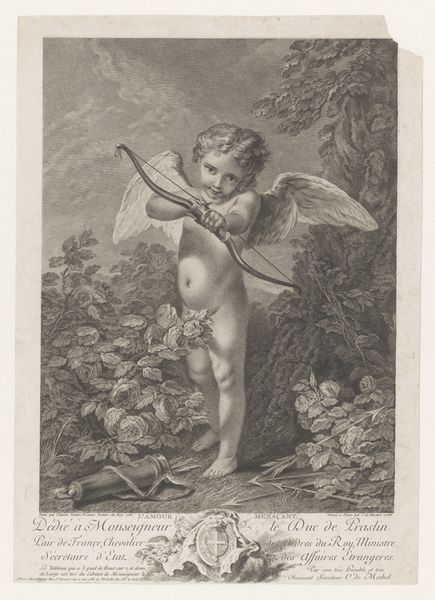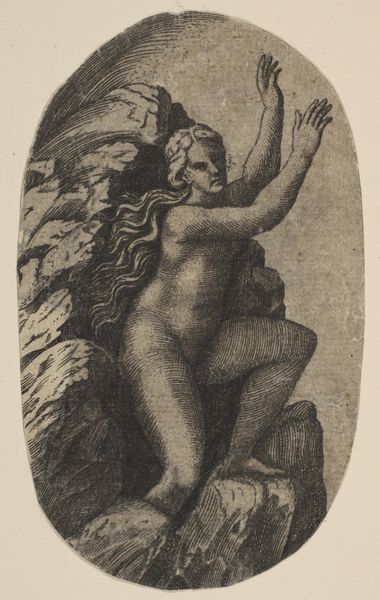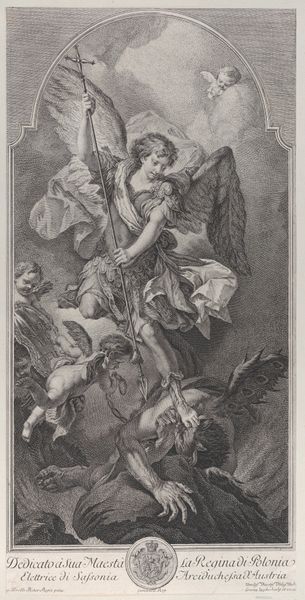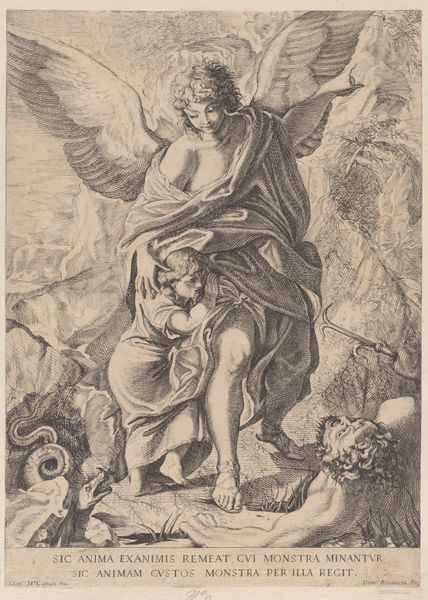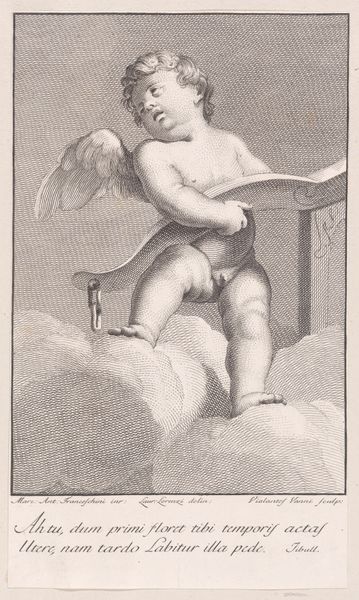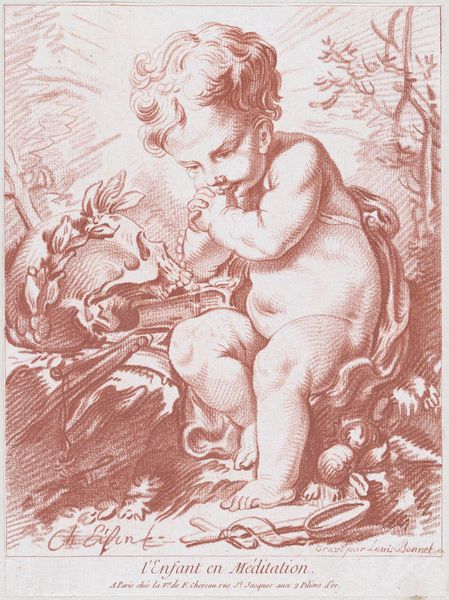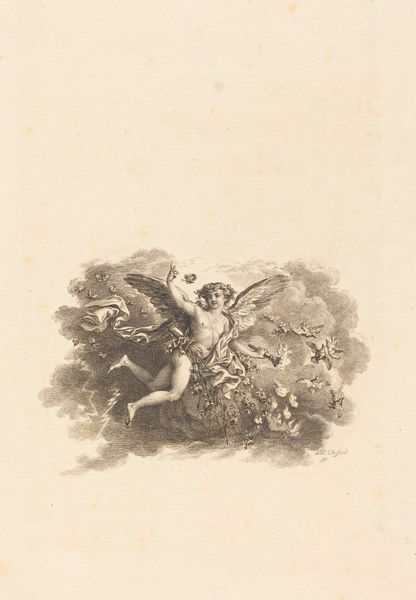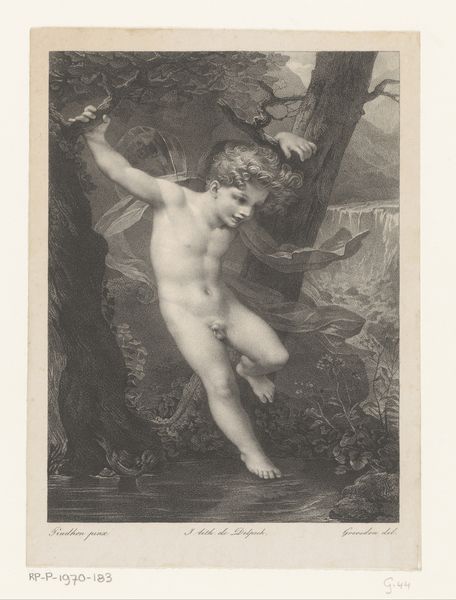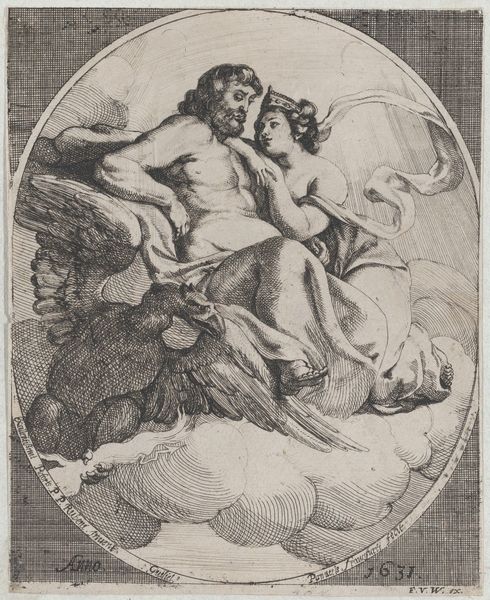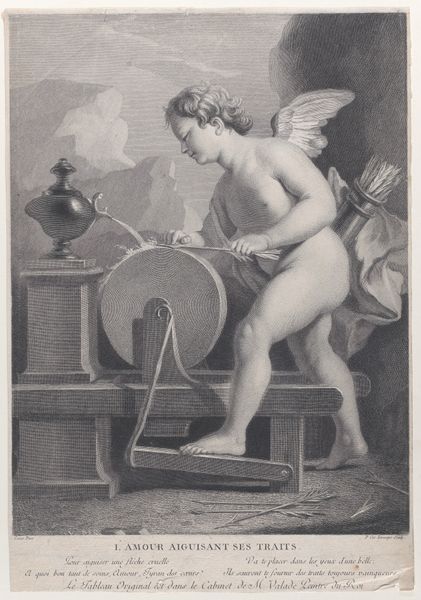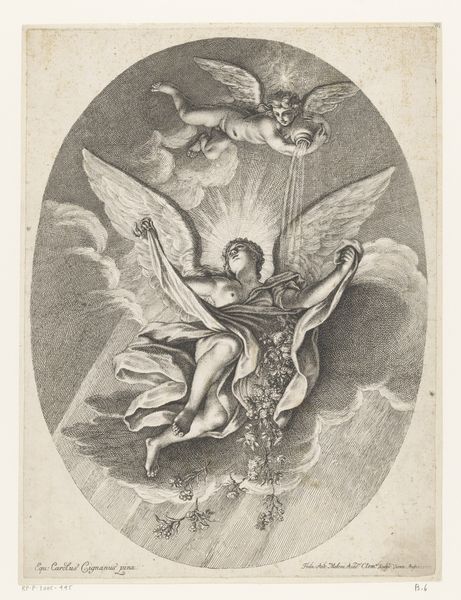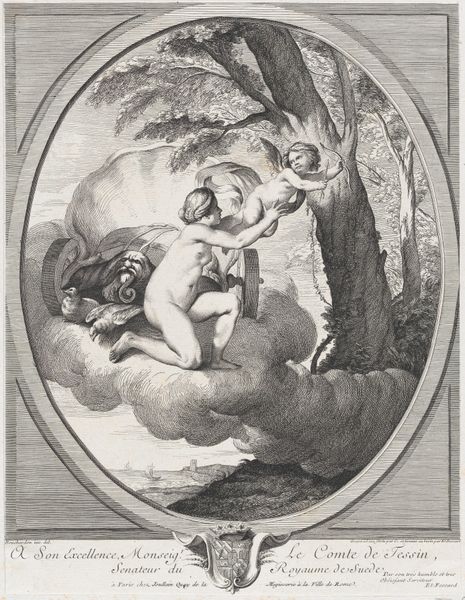
Dimensions: 211 mm (height) x 157 mm (width) (plademaal)
J.F. Clemens created this print of Cupido using engraving, a process that demands precision and control. The image is formed by incising lines into a metal plate, likely copper, with a tool called a burin. Ink is then applied to the plate, filling the grooves, and the surface is wiped clean. When paper is pressed against the plate, the ink transfers, creating the image we see. Look closely at the varying line weights which create depth and shadow; notice how the texture of the clouds is different from Cupid's smooth skin. This control demonstrates Clemens's mastery. Engraving was a vital method for disseminating images, allowing for relatively inexpensive reproduction. This print made Cupid accessible to a wider audience, connecting themes of love and desire with broader social spheres. The labor-intensive process speaks to the value placed on skilled craftsmanship in the 18th century, an era where artistry and commerce were increasingly intertwined. This intimate print reflects complex dynamics of art, labor, and accessibility.
Comments
No comments
Be the first to comment and join the conversation on the ultimate creative platform.
